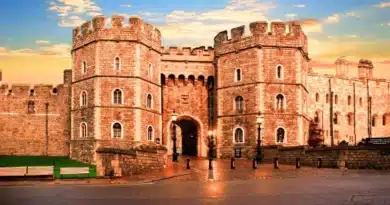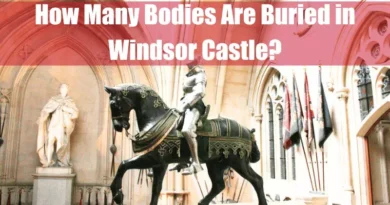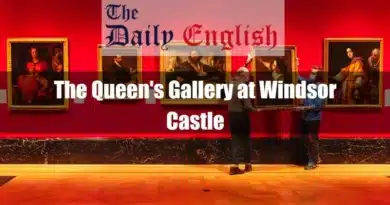How Many Military Knights Are There At Windsor Castle?
Currently, the Military Knights of Windsor comprise 13 retired military officers who reside at Windsor Castle. Historically, the number of knights has varied. When the Order of the Garter was established in 1348, 26 knights were appointed. This number was reduced to 13 during King Henry VIII’s reign. After the Restoration, King Charles II increased the number to 18, but tradition now maintains the number at 13.
The Military Knights of Windsor, often referred to historically as the “Poor Knights of Windsor,” are a unique and venerable institution with deep roots in British military and royal history. These retired military officers, who reside at Windsor Castle, are closely associated with the Order of the Garter and the daily services held at St. George’s Chapel. Though no longer impoverished as their predecessors once were, these knights continue to uphold centuries-old traditions of service and ceremony.
Key Takeaways
| Key Takeaways |
|---|
| The Military Knights of Windsor currently consist of 13 retired military officers residing at Windsor Castle. |
| The number of knights historically varied, beginning with 26 knights when the Order of the Garter was established in 1348. |
| King Henry VIII reduced the number of knights to 13 during his reign. |
| After the Restoration, King Charles II increased the number of knights to 18, but the tradition now maintains the number at 13. |
| The Military Knights of Windsor are also historically known as the “Poor Knights of Windsor. |
| These knights are a venerable institution with deep roots in the British military and royal history. |
| The knights are associated with the Order of the Garter and participate in the daily services at St. George’s Chapel. |
| Although no longer impoverished like their predecessors, they continue to uphold centuries-old traditions of service and ceremony. |
Origins and Historical Evolution

The origins of the Military Knights of Windsor can be traced back to the mid-14th century. Following the Battle of Crécy in 1346, many English knights were financially ruined after being captured by the French and forced to liquidate their estates to pay ransom. In response to the plight of these veterans, King Edward III established a community of knights, known initially as the Alms Knights or Poor Knights, to serve in perpetuity at the chapel of the newly founded Order of the Garter at Windsor Castle.
1348, when the Order of the Garter was formally established, twenty-six Poor Knights were appointed to mirror the twenty-six Knights of the Garter. Their primary duty was to “serve God continually in prayer,” attending four services daily and praying for the Sovereign and the Knights of the Order of the Garter. These knights were lodged within Windsor Castle and received a modest stipend for their service, reflecting their status as impoverished veterans. Importantly, any knight who came into wealth exceeding an annual income of £20 was disqualified from the college.
Over the centuries, the number of Poor Knights fluctuated based on royal decrees:
- King Henry VIII reduced their number from twenty-six to thirteen.
- Queen Elizabeth I re-founded the Order in 1559, adhering to her father’s reduction.
- King Charles II increased the number to eighteen following his restoration to the throne.
In 1833, King William IV officially renamed the Poor Knights as the Military Knights of Windsor, reflecting their military service and the evolving nature of their role. He also permitted them to wear the uniform of Army Officers on the Unattached List, which included a distinctive scarlet tailcoat, sword, sash and cocked hat with a plume. This uniform is still worn by the Military Knights today.
Modern Role and Duties

While the Military Knights of Windsor no longer live in poverty, they remain military pensioners selected from among retired Army Officers. Today, their duties primarily revolve around the ceremonial aspects of the Order of the Garter and the daily services at St. George’s Chapel. They are not members of the Order of the Garter itself or automatically knighted in any chivalric order. However, they play a crucial role in the grand processions and services that define the Order’s public presence.
The Military Knights are led by a Governor, a position within the Royal Household traditionally held by a senior retired officer since the mid-sixteenth century. The role of Governor was brought under the control of the Constable of Windsor Castle in 1905, and since 1906, all Governors have been senior retired military officers.
Daily Life and Responsibilities
The Military Knights of Windsor reside in the Lower Ward of Windsor Castle, where they are provided with accommodation as long as they can fulfil their duties. These duties are extensive and often involve being on parade nearly every Sunday, as well as for state visits, military funerals, and the laying up a Garter Knight’s banner. The most significant event in their calendar is the annual Garter Ceremony, where they lead the procession through Windsor Castle’s precincts to St. George’s Chapel.
In addition to their ceremonial roles, some Military Knights take voluntary positions within the College of St. George and Windsor Castle. Their commitment to service continues well into their later years, with most Knights serving until they can no longer carry out their responsibilities.
A Legacy of Service
The Military Knights of Windsor claim to be the oldest military establishment still listed in the Army List, a testament to their enduring presence and significance in British history. From their origins as a chantry of impoverished knights praying for the Sovereign, they have evolved into a respected and integral part of the royal and military traditions at Windsor Castle.
Their history reflects changing military and royal customs and tells the story of how service and duty can adapt to the needs of the time while maintaining a connection to the past. The Military Knights of Windsor remain a living link to the medieval foundations of the Order of the Garter, continuing to embody the values of loyalty, service, and dedication that have defined their role for nearly seven centuries.
FAQ
What are the Military Knights of Windsor?
The Military Knights of Windsor are retired Army officers who reside within Windsor Castle and perform ceremonial duties at St George’s Chapel.
How were the Military Knights of Windsor founded?
King Edward III established the Military Knights of Windsor shortly after the Battle of Crécy to support knights who had become impoverished due to heavy ransoms demanded by the French.
What are the duties of the Military Knights of Windsor?
The Military Knights participate in ceremonial events and services at St George’s Chapel, contributing to its daily life and maintaining its traditions.
How can one become a Military Knight of Windsor?
Candidates must be retired Army officers, typically under age 67, willing to observe the Anglican faith, and prepared to take an oath of allegiance to the College of St George. Preference is given to married applicants.
Where do the Military Knights of Windsor reside?
The Military Knights reside within Windsor Castle, with accommodations provided in the Military Knights’ Quarters located in the Lower Ward.
What is the historical significance of the Military Knights of Windsor?
Claimed to be the oldest military establishment in the Army List, the Military Knights have a rich history dating back to the 14th century, reflecting the longstanding tradition of royal military service in England.
Are the Military Knights of Windsor part of the Order of the Garter?
While they are associated with St George’s Chapel, the spiritual home of the Order of the Garter, the Military Knights are not members of the Order itself.
Do the Military Knights of Windsor receive a salary?
Historically, the Military Knights received a salary and lodging in Windsor Castle. Today, they continue to reside in the castle and perform ceremonial duties, though specific financial arrangements may vary.
What is the role of the Governor of the Military Knights of Windsor?
The Governor oversees the Military Knights, including selecting new members and managing their duties within Windsor Castle.
Can the public interact with the Military Knights of Windsor?
Visitors to Windsor Castle and St George’s Chapel may observe the Military Knights during ceremonial events and services, offering a glimpse into this historic institution.
What is the origin of the term ‘Poor Knights’ for the Military Knights of Windsor?
The Military Knights were originally known as ‘Poor Knights’ because they were impoverished soldiers who had served the king in wars but had become destitute during their service.
How has the role of the Military Knights of Windsor evolved over time?
The Poor Knights were initially expected to attend four daily services in St George’s Chapel to fulfil their praying obligations. However, this level of attendance was never dutifully maintained, and in a Warrant issued on 14 December 1870, Queen Victoria granted the Military Knights liberty to attend services as they wished.
What is the significance of the Military Knights’ uniform?
The uniform of the Military Knights, granted by King William IV in 1833, comprises a scarlet tailcoat, sword, sash, and cocked hat with plume, reflecting traditional Army Officer attire.
How are vacancies among the Military Knights filled?
When a vacancy arises, the Governor of the Military Knights selects a new Knight from a list of suitable candidates. A further interview takes place with the Constable and Governor of the Castle, the Governor of the Military Knights, the Dean of Windsor, and others. If this interview is successful, details are sent to the Sovereign to approve the appointment.
What is the relationship between the Military Knights and the Order of the Garter?
The Military Knights support the Order of the Garter and the services of St. George’s Chapel, Windsor Castle. However, they are not considered members of the Order.
Do the Military Knights participate in public ceremonies?
Yes, the Military Knights participate in the Order’s processions, escorting the members, and in the chapel services.
What is the historical significance of the Military Knights’ lodgings?
The Military Knights’ Lodgings on the west side of the Lower Ward of Windsor Castle were built to house poor knights allied to the College of St George.
Are the Military Knights involved in the daily operations of Windsor Castle?
While the Military Knights reside within Windsor Castle and perform ceremonial duties, they are not involved in the castle’s daily operations.
What is the current status of the Military Knights of Windsor?
The Military Knights of Windsor are retired military officers who receive a pension and accommodation at Windsor Castle. They support the Order of the Garter and the services of St. George’s Chapel, Windsor Castle.









